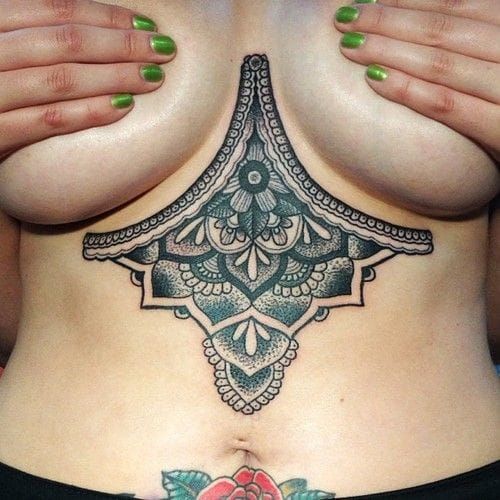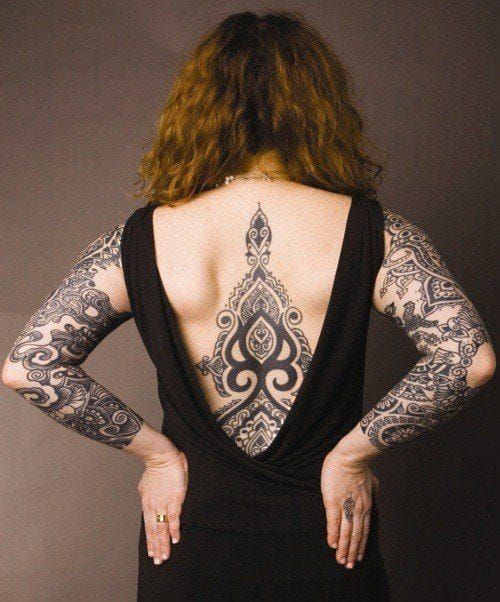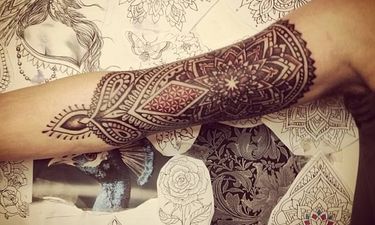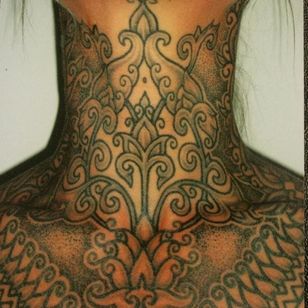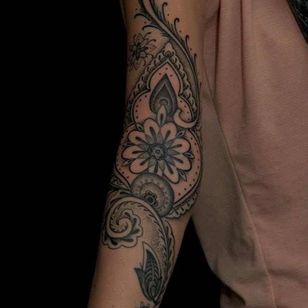Mehndi or Henna is a paste that is bought in a cone shaped tube and is made into designs for men and women.
It is also derived from the Sanskrit word mendhikā. The use of mehndi and turmeric is described in the earliest Hindu Vedic ritual books. Originally only used for the palms of women and never for men, but as time progressed, it is now more common for men to wear it. Haldi (staining oneself with turmeric paste) as well as mehndi are Vedic customs, intended to be a symbolic representation of the outer and the inner sun. Vedic customs are centered around the idea of "awakening the inner light." Traditional Indian designs are of representations of the sun on the palm.
Mehndi decorations became fashionable in the West in the late 1990s, where they are called henna tattoos. Now with the growing popularity of tattoos in society, mehndi style or inspired designs can become permanent fixtures on the dermis instead of just temporary as it is with henna paste.
Mehndi decorations became fashionable in the West in the late 1990s, where they are called henna tattoos. Now with the growing popularity of tattoos in society, mehndi style or inspired designs can become permanent fixtures on the dermis instead of just temporary as it is with henna paste.
Here are 20 mehndi inspired tattoos for your enjoyment.


For over five thousand years, henna has served as a symbol of good luck, health and sensuality in the Arab world. Generations of women have used a paste made primarily of dried ground henna leaves to cover their hands and feet with designs ranging from simple blobs to intricate geometric patterns designed to ward off evil, promote fertility and attract good energy.



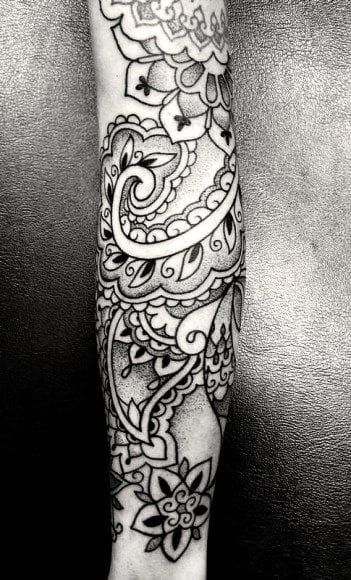

Henna was originally used as a form of decoration mainly for Hindu brides. Mehndi in Indian tradition is typically applied during special Hindu weddings and Hindu festivals like Karva Chauth, Vat Purnima, Diwali, Bhai Dooj and Teej. In Hindu festivals, many women have Henna applied to their hands and feet and sometimes on the back of their shoulders too, as men have it applied on their arms, legs, back, and chest. For women, it is usually drawn on the palm, back of the hand and on feet, where the design will be clearest due to contrast with the lighter skin on these surfaces, which naturally contain less of the pigment melanin.
